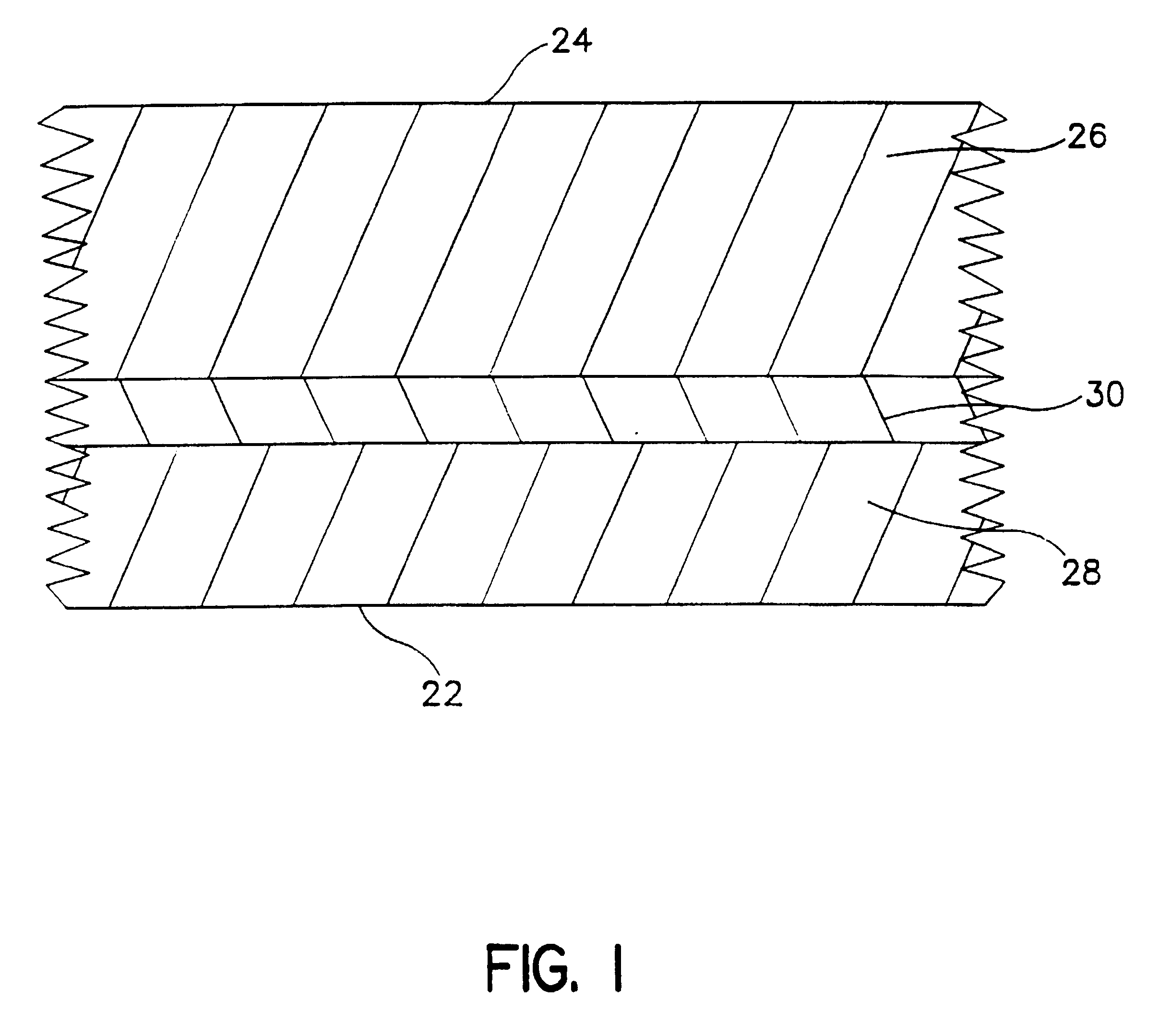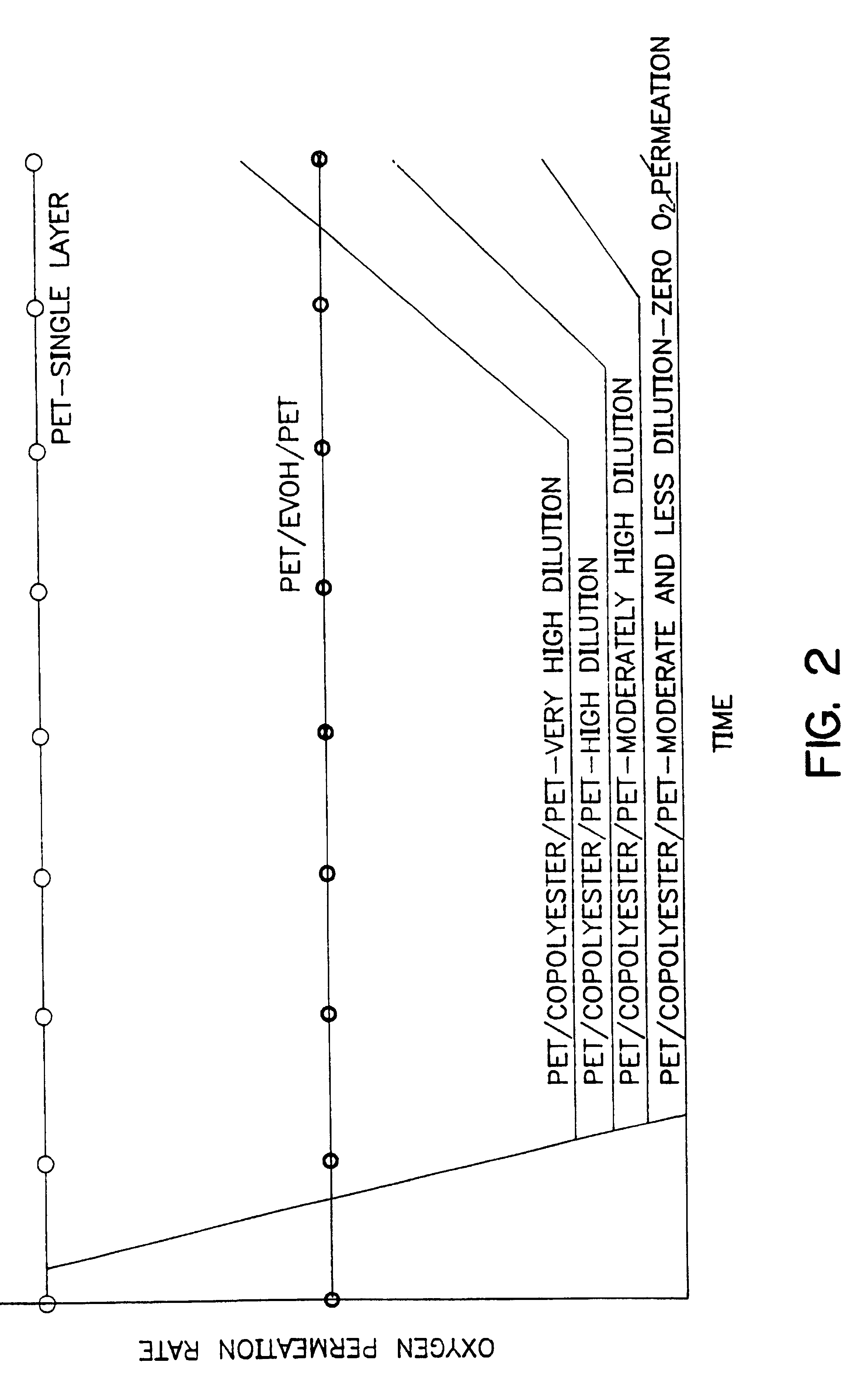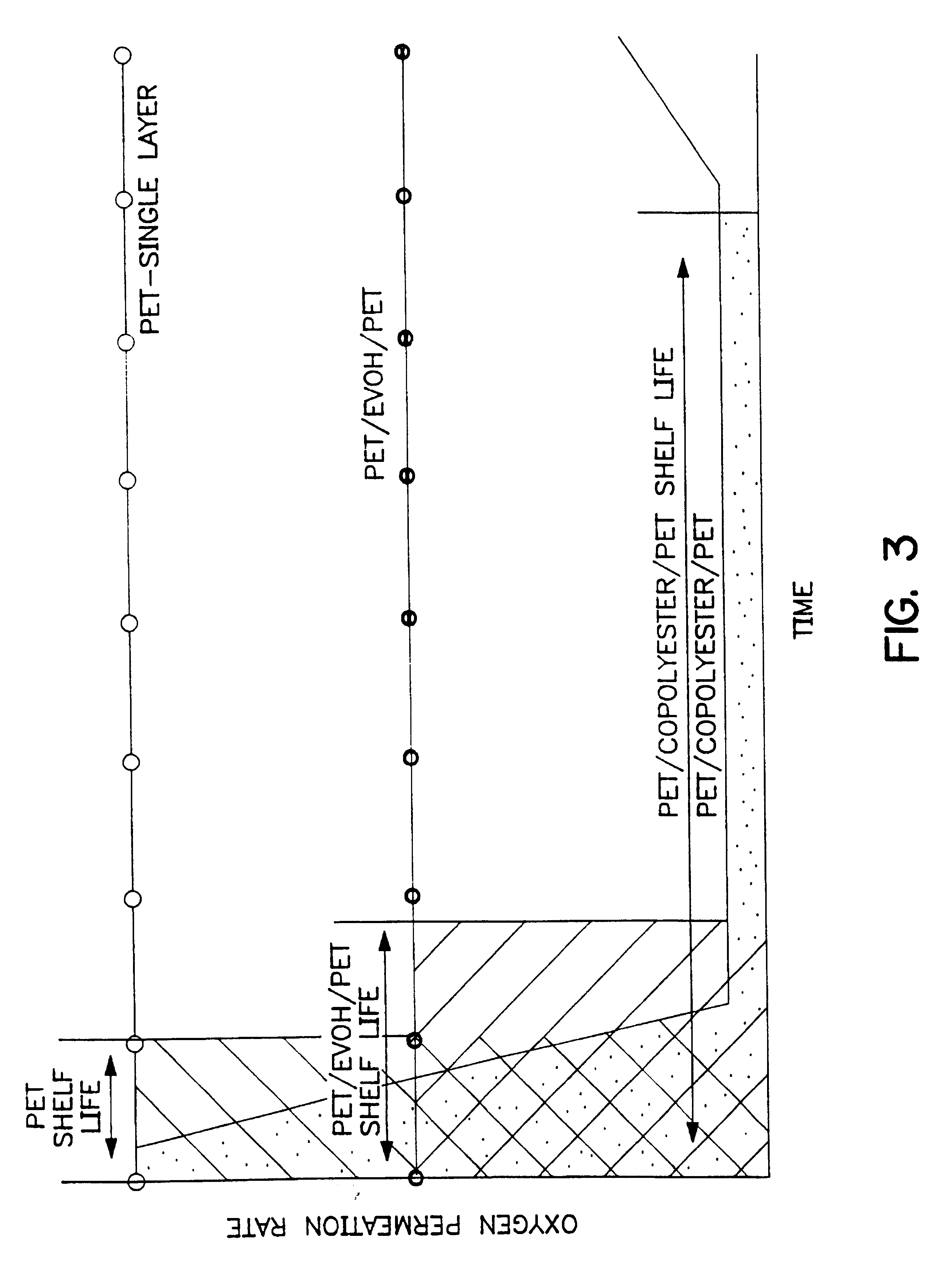Zero oxygen permeation plastic bottle for beer and other applications
- Summary
- Abstract
- Description
- Claims
- Application Information
AI Technical Summary
Benefits of technology
Problems solved by technology
Method used
Image
Examples
embodiment iii-b
Wt % PBD Segments in the Scavenging Copolyester
Variation of the wt % of PBD segments in copolyester formulations is another technique which was also disclosed in the co-pending parent application filed Sep. 23, 1996 and having application Ser. No. 08 / 717,370 now U.S. Pat. No. 6,083,585. This series of related applications encompasses and envisions copolyesters comprising up to 50 wt % PBD segments with the remainder comprising polyester segments. Table 1 above discloses formulations of scavenging copolyester compositions having 2, 4, 6, 8, 10 and 12 wt % PBD segments. Table 2, below, has data which confirm that those compositions having a higher percentage of PBD segments also have a higher oxygen scavenging capacity. The data of Table 2 were taken by the method of Examples 12 to 15 in co-pending parent application Ser. No. 08 / 717,370 now U.S. Pat. No. 6,083,585.
Variation of oxygen scavenging capacity or shelf life by this technique is also a relatively retrospective method of those...
embodiment iii-c
Concurrent use of other Oxygen Scavengers with Copolyester Scavenger Within the Bottle Walls
In FIG. 1, layer 30 represents the middle oxygen scavenging layer of the preferred multilayer bottle wall construction of this invention. While this scavenging layer may, in some embodiments, comprises close to 100% scavenging copolyester, applicants have found advantages to deployment of diluted copolyester. For one, it more easily permits an even distribution of the scavenging system through out the bottle wall. The diluent is typically the polyester of bottle wall outer layer 26 or bottle wall inner layer 28 in FIG. 1. In most instances the polyester of layers 26 and 28 are the same except that the polyester of layer 26 may be entirely or partially recycle material. Any diluent used in layer 30 may also be entirely or partially recycle material.
Another advantage of dilution of layer 30 is that the technique lends itself well to the advance preparation of the formulation to be used as layer...
embodiment iii-d
Extent of Dilution of the Copolyester in the Oxygen Scavenging Layer
As noted in III-C above, most embodiments involve addition of diluent to the oxygen scavenging copolyester layer of the multilayer bottles. The extent of dilution of the copolyester in the scavenging layer serves as another powerful method of adjusting the oxygen scavenging capacity of the bottle. Typically the diluent comprises from zero to about 95 wt % of the scavenging layer. In several extreme embodiments, diluent in excess of 99 wt % has been deployed. The diluent is typically PET, virgin or recycled, but could be any low cost compatible material. As such, dilution of the copolyester down to only the level required for the given application may substantially reduce the cost of the bottle.
PUM
| Property | Measurement | Unit |
|---|---|---|
| Fraction | aaaaa | aaaaa |
| Fraction | aaaaa | aaaaa |
| Fraction | aaaaa | aaaaa |
Abstract
Description
Claims
Application Information
 Login to View More
Login to View More - R&D
- Intellectual Property
- Life Sciences
- Materials
- Tech Scout
- Unparalleled Data Quality
- Higher Quality Content
- 60% Fewer Hallucinations
Browse by: Latest US Patents, China's latest patents, Technical Efficacy Thesaurus, Application Domain, Technology Topic, Popular Technical Reports.
© 2025 PatSnap. All rights reserved.Legal|Privacy policy|Modern Slavery Act Transparency Statement|Sitemap|About US| Contact US: help@patsnap.com



